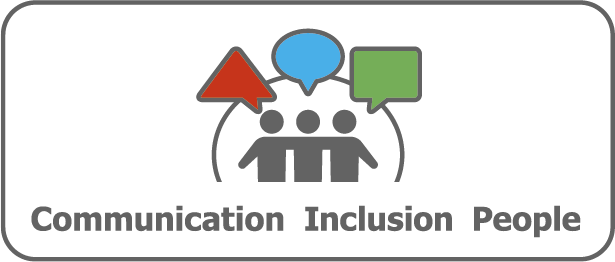Communication Inclusion People aims to be as accessible as possible to as many people as possible. That includes on our website.
Our writing uses
- everyday words
- short, simple sentences
- bullet pointed lists in preference to paragraphs
Layout of information
- has headings so people can get to what they want quickly
- is in a logical order
- is spaced out – we avoid having too much to look at on a page.
- is similar on each page so people get used to how we arrange content.
- text starts on the left of the screen. We avoid putting text in the centre.
- symbols are placed next to the relevant information.
- font is Arial, size 12-14, plain black on white background
- no italics
- no animated or blinking text
Pictures
- We use symbols that are easy to understand for as many people as possible. Each symbol has the same meaning wherever it is used on our site.
- Symbols help people get an idea of what the text next to it is about. They also help people find what they are looking for quickly.
- We use photographs to help get information across.
Information technology accessibility
This website meets Website Content Accessibility Guidelines standard 2.1 AA.
If you have any problems using any part of this site please get in touch.
More tips on how to follow up accessibility issue with any website provider can be found at Contacting Organisations about Inaccessible Websites | Web Accessibility Initiative (WAI) | W3C
Accessibility advice for users
The BBC – My Web, My Way gives practical help. It tells you
- how to magnify your screen,
- change fonts,
- use screen readers
- other helpful tools
Accessibility advice for website developers
Ability Net’s My Computer My Way website. Suggests ways to make your website as accessible to as many people as possible go to
